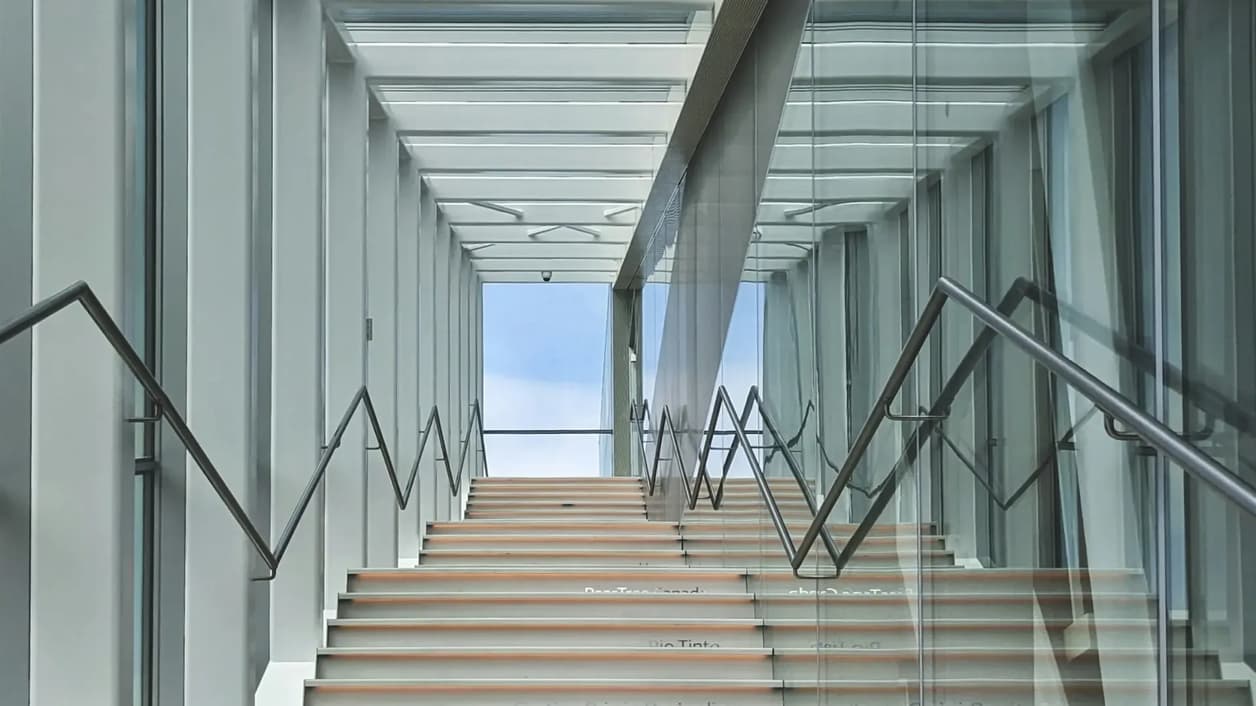
At the start of this year, the IMF forecast that nearly all of the world’s economies would grow, and that a recession was a distant prospect.¹ Now, barely one month after the Liberation Day announcement, the IMF meetings in Washington were marked by gloom, a sense of policy dislocation and debate of an imminent trade and shipping shock.²
For private assets, investors have at least missed the extreme levels of volatility in equities (the Vix index pushed into the 50s³) and also, unexpectedly, in bonds.⁴ In many cases investors were forced sellers of these asset classes, and in general portfolios have been disrupted by public market action.⁵
Looking ahead, there are two risks on the horizon, but a positive skew is also emerging.
The first risk relates to the hit to the business cycle. The tariff dispute has led some firms to pause investment,⁶ and in some cases, sectors that are directly hit – such as tourism in the US and manufacturing in China – are seeing a speedy retrenchment.⁷ ⁸ Earnings estimates are falling⁹ and now hard data confirm what surveys have highlighted – that a contraction may be on the way.¹⁰ Through May, we believe we may see the physical side-effects of the tariff dispute as the supply of goods from China to the US is likely curtailed and as prices start to rise in shops.
The second risk is the capital market cycle. At the start of this year, a number of large European fintech firms, for example, were apparently ready to list on stock markets. These IPOs are now delayed,¹¹ and it may be that instead of US listings, these firms are IPO’d in Europe. Deal making in other segments of capital markets has stalled,¹² though we note that in the private asset space, Worldpay was acquired by Global Payments¹³ and Intel sold part of its Altera unit to Silver Lake.¹⁴
Limiting damage
On a more positive tack, having previously outlined our two main macro scenarios of the ‘status quo’ versus a ‘new status quo’, we feel that the administration is being steered (by markets) away from the more radical ‘new status quo’ model. We note that this macro crisis is entirely man-made and, in this context, market volatility and a sense that Wall Street and corporate America have reached their pain thresholds suggest that there is a limit to how damaging the crisis can become.
Interest rate cuts
In addition, if the employment cycle turns down sharply, we believe that this will provide hard evidence for the Federal Reserve to cut interest rates, albeit in a politically charged environment. Other central banks, notably the ECB, have already started down this route¹⁵ and I expect a number of further cuts by central banks worldwide.
If this scenario materialises, we expect that by the end of the summer, markets might have a keener sense of the Trump administration’s intentions and the parameters of this. We also anticipate that interest rates may be lower, which could free up capital market activity, while rate cuts themselves should have a positive impact on sentiment.
Private equity pivot
In the interim, as with other sectors, we expect operators in the private assets industry will pivot. In particular, we’re picking up a number of new developments:
- In secondaries, many of the larger firms raised considerable amounts of capital last year,¹⁶ and now have a richer environment in which to invest in terms of secondary opportunities, notably as less seasoned investors are less present. Pressures on investors to rebalance portfolios, combined with fund managers using continuation funds to retain assets, are fuelling activity and creating potentially more attractive secondaries buying opportunities.¹⁷ In addition, the 'denominator effect' may push institutional investors beyond their target allocation ranges for PE. These overallocated LPs may then look to the secondary market to sell down some of their private fund stakes to bring their portfolios back into balance, creating additional supply.
- In general, in the PE sector (and especially in the mid-market space), many portfolio businesses, while not unscathed by the macro turbulence, are often in more domestically focused industries that may ultimately be less disrupted by tariffs.¹⁸ ¹⁹ ²⁰ ²¹ Our interactions with managers underline that the majority of investments are likely in companies with stronger cash flows and lower financial leverage, which we expect should be well positioned to ride out this uncertainty.
- We expect that infrastructure remains on an uptrend in terms of the need for countries to invest, and that increasingly they will do so in forms of partnership with private asset firms. Defence is a similar theme, where we see a new trend emerging in Europe.

¹ https://www.reuters.com/markets/imf-chief-sees-steady-world-growth-2025-continuing-disinflation-2025-01-10/ ² https://www.reuters.com/business/imf-world-bank-meetings-end-with-little-tariff-clarity-economic-foreboding-2025-04-27/ ³ https://www.investing.com/indices/volatility-s-p-500 ⁴ https://markets.ft.com/data/bonds/tearsheet/summary?s=US10YT ⁵ https://www.wsj.com/finance/investing/market-chaos-professional-investors-sold-stocks-individuals-bought-d1c325c6 ⁶ https://www.investing.com/news/stock-market-news/firms-halt-investments-amid-uncertainty-says-feds-hammack-93CH-4001844 ⁷ https://www.cnbc.com/2025/04/30/chinas-factory-activity-drops-to-a-near-two-year-low-in-april-as-trade-tariffs-bite.html ⁸ https://www.forbes.com/sites/tylerroush/2025/04/22/tariff-layoff-tracker-mack-trucks-volvo-cut-hundreds-of-jobs-as-trumps-levies-pose-market-uncertainty/ ⁹ https://www.barrons.com/articles/sp500-earnings-tariffs-0b9cf2d2 ¹⁰ https://www.reuters.com/business/stockpiling-ahead-tariffs-likely-hurt-us-economy-first-quarter-2025-04-30/ ¹¹ https://www.inc.com/chris-morris/7-ipos-likely-on-hold-due-to-trumps-trade-war/91172983 ¹² https://www.reuters.com/markets/deals/tariff-turmoil-puts-freeze-global-ma-dealmaking-2025-04-04/ ¹³ https://apnews.com/article/global-payments-fintech-worldpay-acquisition-7b6de208f66df8adc45c368391dc70d7 ¹⁴ https://www.wsj.com/business/deals/intel-to-sell-majority-stake-of-altera-to-private-equity-firm-silver-lake-62e2ec0b ¹⁵ https://www.ecb.europa.eu/press/pr/date/2025/html/ecb.mp250417~42727d0735.en.html ¹⁶ https://www.blackrock.com/institutions/en-us/insights/market-update-h2-2024 ¹⁷ https://www.lazard.com/research-insights/lazard-2024-secondary-market-report/ ¹⁸ https://fsinvestments.com/fs-insights/tariffs-four-essential-investor-questions-answered/?utm_source=chatgpt.com ¹⁹ https://alternativecreditinvestor.com/2025/04/22/private-equity-less-exposed-to-tariffs-than-public-equities-managers-say/ ²⁰ https://www.nb.com/en/global/insights/article-potential-impact-of-us-tariffs-private-equity-manager-perspectives ²¹ https://www.nb.com/en/global/insights/article-tariffs-are-here-what-does-that-mean-for-private-equity



